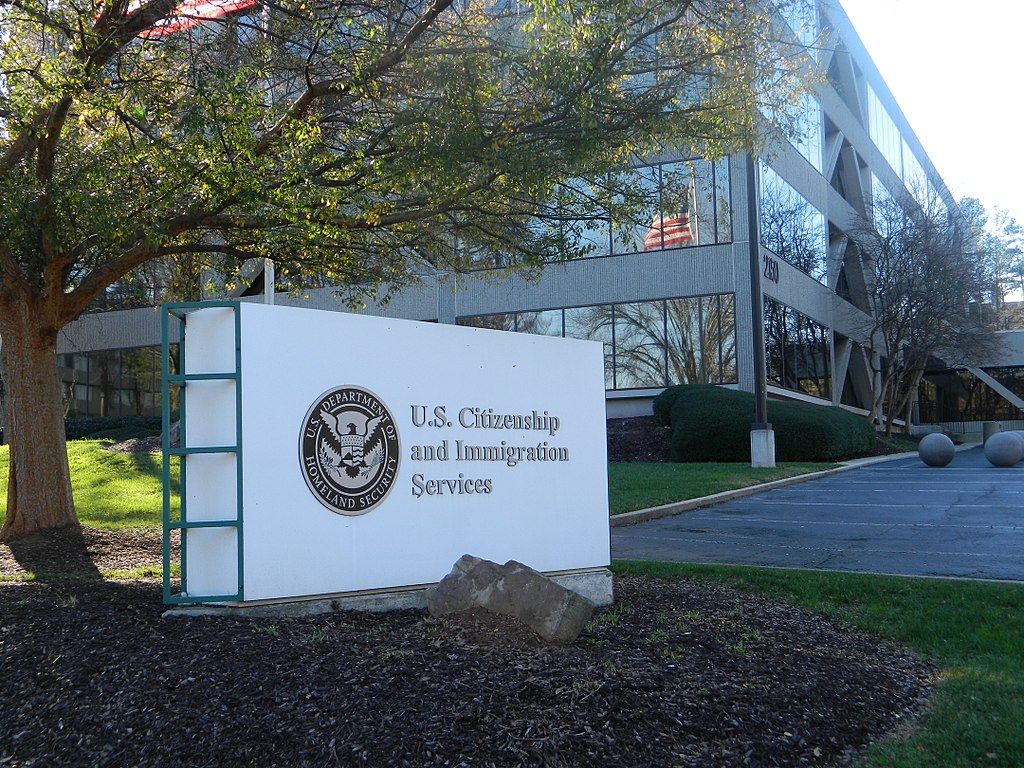Immigration Enforcement Priorities and Presidential Duty
The executive branch has not just the authority to draw lines that set immigration enforcement priorities in order to advance homeland security objectives—it has the duty to do so.

Published by The Lawfare Institute
in Cooperation With

The Supreme Court will consider a challenge to immigration enforcement priorities this December in a case with significant implications for everyday immigration policing. The case arises from the Biden administration’s effort to narrow immigration enforcement priorities as part of a broader objective to reverse the immigration policies of the prior administration.
On Sept. 30, 2021, Secretary of Homeland Security Alejandro Mayorkas issued a guidance memorandum to the acting director of Immigration and Customs Enforcement (ICE) setting priorities for enforcement. This memorandum explained the rationale for prosecutorial discretion in immigration law, grounded in both humanitarian considerations and resource constraints. It further identified the aggravating and mitigating factors that frontline officers should consider when deciding whether to apprehend and charge a deportable noncitizen, and it instructed ICE agents to prioritize the arrest and deportation of immigrants who recently crossed the border and immigrants presenting a threat to public safety and/or national security.
The states of Texas and Louisiana sued to enjoin the Mayorkas memorandum in April, arguing that it violated two narrow provisions of the Immigration and Nationality Act (INA) that require noncitizens convicted of certain crimes to be detained. Plaintiffs have also raised claims under the Administrative Procedure Act (APA).
On June 10, Judge Drew Tipton of the U.S. District Court for the Southern District of Texas enjoined the Mayorkas memorandum on statutory and APA grounds after a two-day trial. Tipton acknowledged the executive branch’s prosecutorial discretion in immigration law, noting that the federal government “has case-by-case discretion to abandon immigration enforcement as to a particular individual.” Nonetheless, Tipton held in part that the INA constrained that discretion through its use of mandatory language in two provisions. The U.S. Court of Appeals for the Fifth Circuit declined to stay the injunction. The Biden administration then sought a stay of the district court injunction with the Supreme Court. On July 21, the Supreme Court denied the stay in a 5-4 vote and granted a petition for certiorari.
Parallel litigation has gone the other way. Shortly after the Department of Homeland Security published the Mayorkas memorandum, the states of Arizona, Montana, and Ohio also sued the Biden administration, seeking to enjoin implementation of the guidance document. A district court judge in the Southern District of Ohio issued a “nationwide preliminary injunction,” blocking the department from relying on the memo’s policies and priorities in all 50 states. The Biden administration then sought emergency relief in the U.S. Court of Appeals for the Sixth Circuit. The appeals court granted the motion to stay, ordered expedited briefing, and ultimately reversed the preliminary injunction. In its decision, the Sixth Circuit expressed skepticism about the states’ standing to bring suit, the reviewability of the Mayorkas memorandum under the APA, and the merits of the states’ substantive claims.
Although these lawsuits do not raise constitutional claims, the proper role of the president in supervising the immigration bureaucracy is hotly contested.
In a recent article published in the Indiana Law Journal, I argue that the president has not only the authority, but the duty, to set meaningful enforcement priorities that draw lines among deportable noncitizens in order to advance the purposes of the immigration system. Article II of the Constitution imposes a duty on the president to “take Care that the Laws be faithfully executed.” Although many scholars have emphasized the president’s duty to ensure that agencies take enforcement action, my article emphasizes the central role of presidential judgment in prioritizing enforcement efforts. It argues that faithful execution requires that the inevitable judgments about which immigrants to apprehend be made deliberately and with reference to the purposes of the immigration system. Indiscriminate enforcement does not meet this standard.
Selective or partial immigration enforcement is inevitable in the U.S., given its vast deportable population and limited resources for enforcement (however staggering in absolute terms). The INA renders some 11 million noncitizens deportable, with new unauthorized entrants arriving every year—but even President Obama, dubbed the “deporter-in-chief” by some immigrant rights activists, deported a maximum of roughly 400,000 people per year. Plainly, only some can and will be apprehended and deported. Others will remain free or receive some form of lenience. As Cristina Rodríguez and Adam Cox have argued, the mismatch between the breadth of the INA and the bureaucracy’s enforcement capacity means that the president presides over a “massive shadow immigration system.” Rodríguez and Cox note further that Congress has legislated a draconian code with the knowledge that the executive will select a small subset of the deportable population for enforcement. This dynamic, they argue, has produced a de facto delegation of enforcement discretion to the president.
The U.S. immigration system has functioned in this way for more than a century, and Congress knows it. For example, consider one kind of prosecutorial discretion, known as deferred action: Scholars note that, when the Department of Homeland Security was created through the Homeland Security Act of 2002, Congress was well aware of the use of deferred action as a tool of immigration policy. That same statute assigned the secretary of homeland security the task of “establishing national immigration enforcement policies and priorities.”
This discretion is logical. Choosing among deportable noncitizens involves a policy judgment, one typically reserved for the president and agency leaders. For example, should Homeland Security focus on recent entrants who crossed the border without visas? Or should the agency focus on longer-term residents with criminal convictions? Denying the president’s authority to make policy through enforcement does not eliminate that authority. It passes it on to someone else. Yet these policy questions are for the president and agency leaders to resolve.
The president’s duty to supervise the bureaucracy has special force in immigration enforcement because of immigration law’s crude penalty scheme: The INA specifies deportation as the penalty for every immigration violation, whether that’s failing to update one’s address, entering without authorization, or committing another deportable offense. But this is not how enforcement works. In reality, the enforcement bureaucracy has at its disposal several lesser sanctions, but it currently lacks adequate rules and guidance to govern their imposition. We don’t know why some deportable noncitizens receive deferred action or a stay of removal while others are deported. In such a world, front-end constraints on enforcement discretion become paramount.
When the executive branch fails to set priorities on immigration enforcement, the pitfalls are evident. The Trump administration sought to break with its predecessor by forbidding the immigration bureaucracy from “exempt[ing] classes or categories” of deportable noncitizens from the immigration laws. In this same guidance memorandum, then-Acting Secretary of Homeland Security John Kelly articulated enforcement priorities based on the need to “maximize the benefit to public safety.” But disavowing lenience to anyone is logically inconsistent with prioritizing some over others. If everyone is equally worthy of enforcement, it makes no sense to then claim that enforcing against a subset better advances “public safety” or other public goods. Unsurprisingly, the Trump administration’s priorities were weak, encompassing nearly every deportable noncitizen. This prompted commentators to label the approach “enforcement without priorities.”
The implications of this “gloves-off,” priorities-free approach to enforcement are problematic. Specifically, my article argues that, when the president and the secretary of homeland security fail to guide line officers’ efforts, and resources are insufficient for full enforcement, that failure does not eliminate discretion or enable full enforcement. It simply punts discretion to frontline officers. These officers choose on their own, without supervision, whom to pursue and charge. They become the de facto immigration policymakers, even though Congress tasked the secretary of homeland security with establishing national immigration enforcement priorities.
And this fully devolved discretion invites danger. First, with individual deportation officers deciding whom to pursue for enforcement without explanation or transparency, race discrimination stands to permeate decision-making and go unchecked. This undermines equal protection of the laws. Second, devolved discretion encourages the apprehension of “low-hanging fruit.” Vested with discretion to enforce as they see fit, deportation officers are likely to apprehend the deportable noncitizens most accessible to them, such as those who appear for periodic check-ins with ICE as part of their supervised release. Why engage in a lengthy, costly investigation to locate an elusive enforcement target when deportable noncitizens are walking right in?
This buck-passing approach to immigration enforcement can take other forms, too. Rather than leaving it up to frontline officers to decide how to direct their efforts, a subunit of ICE during the Trump administration sought to avoid line-drawing altogether by issuing a directive requiring frontline officers to apprehend every deportable noncitizen encountered. This amounts to a “zero-tolerance” policy, for no one can or will be shown lenience. Instead of letting frontline officers decide whether to take enforcement action against a particular deportable noncitizen, the zero-tolerance directive purported to centralize discretion at the head of ICE.
But this approach did not supervise frontline officers—it simply pretended that full enforcement was possible. It did not acknowledge that, under zero tolerance, the noncitizens deported will be whichever ones frontline officers happen to encounter, that is, the first few hundred thousand. And who frontline officers encounter depends on where and how these officers look. This, in turn, merely shunts enforcement discretion to the realm of investigation, heightening the role of unaccountable surveillance technologies. Rather than offering a transparent rationale for enforcement against specific noncitizens, this style of enforcement follows the hidden logic of the growing immigration surveillance state.
These two distinct enforcement styles—devolved discretion, which empowers individual officers to decide for themselves whom to pursue without any guidance from agency leadership, and zero tolerance, which purports to mandate full enforcement—reflect an executive branch acting as though there are no hard choices to be made. In both enforcement styles, the president is missing in action, leaving the bureaucracy unsupervised. That’s not faithful execution; it’s abdication through enforcement.
As Shoba Sivaprasad Wadhia has documented in her extensive scholarship on the topic, prosecutorial discretion in immigration law has a long history. Enforcement priorities help organize and facilitate enforcement to maximize whatever public good the government believes enforcement produces. It’s true that not all enforcement priorities are necessarily lawful. Explicitly prioritizing enforcement against noncitizens of a certain racial background, for example, would surely be illegal. But the priorities laid out in the Mayorkas memorandum deal firmly with the kinds of considerations that the immigration bureaucracy relies on every day.
In Arizona v. Biden, the Sixth Circuit said as much. Chief Judge Jeffrey Sutton, who penned the opinion, held that the INA should be read in light of the long-standing tradition of prosecutorial discretion. Congress enacted the INA against that backdrop, and Secretary Mayorkas’s reasoning, accordingly, was not “arbitrary and capricious.”
The enforcement priorities litigation heading to the Supreme Court raises questions of statutory interpretation and administrative law, and the Court is not likely to have an opportunity to opine on the meaning of faithful execution. Nonetheless, should the justices reach the merits of the case, they may draw upon their conceptions of presidential duty when interpreting the INA and the division of labor between Congress and the executive branch. At bottom, a vision of presidential supervision of immigration enforcement is on the line.



.jpg?sfvrsn=676ddf0d_7)

